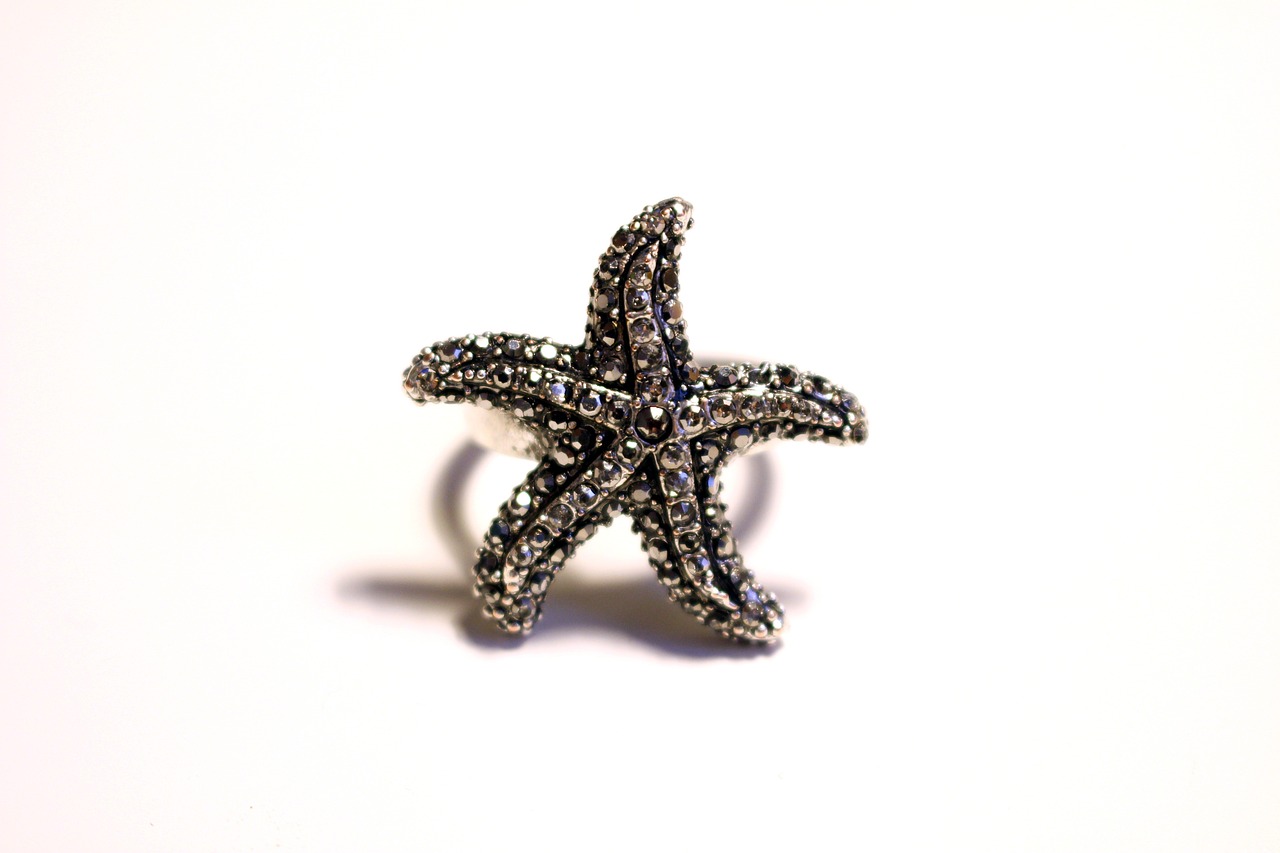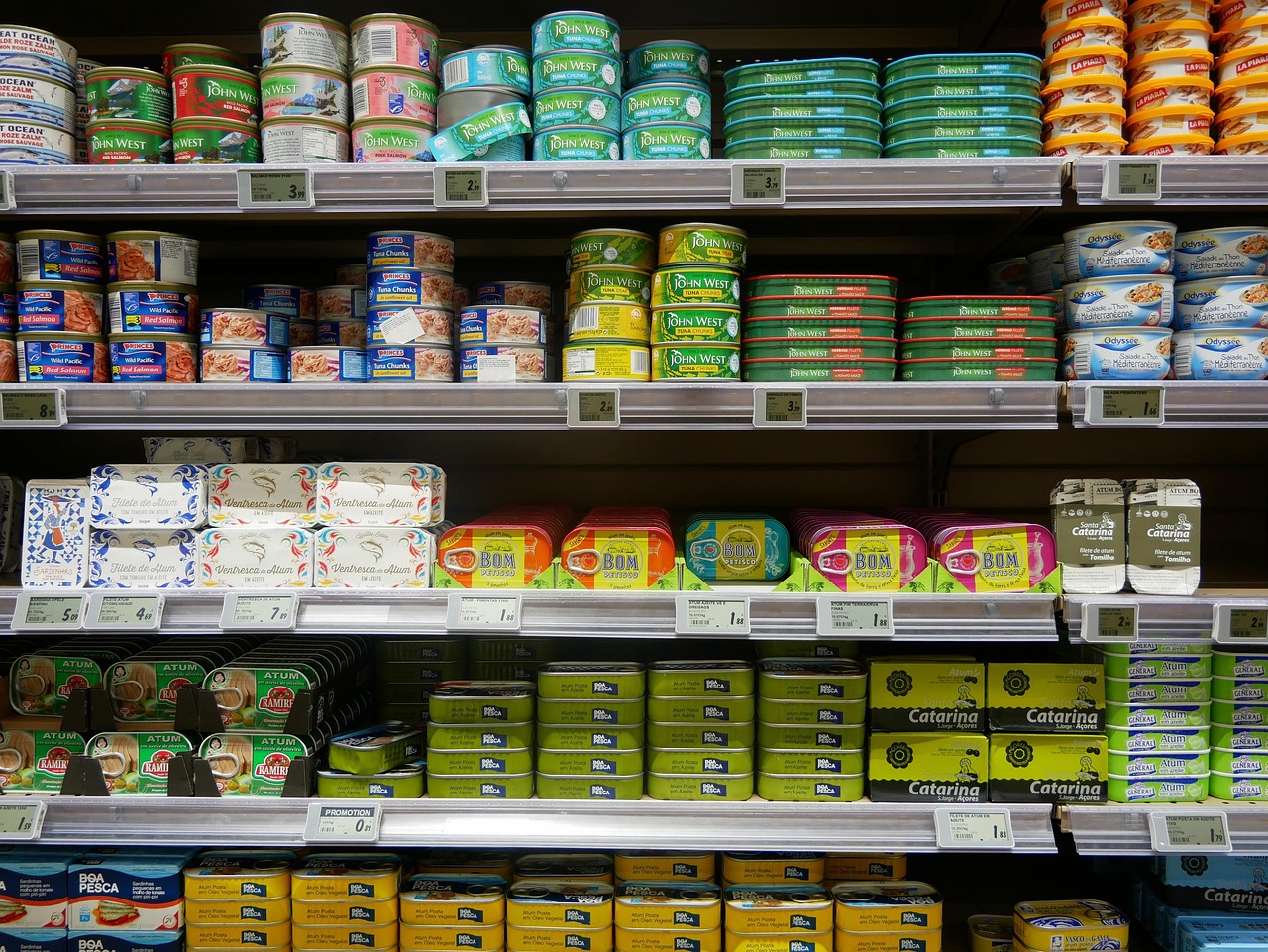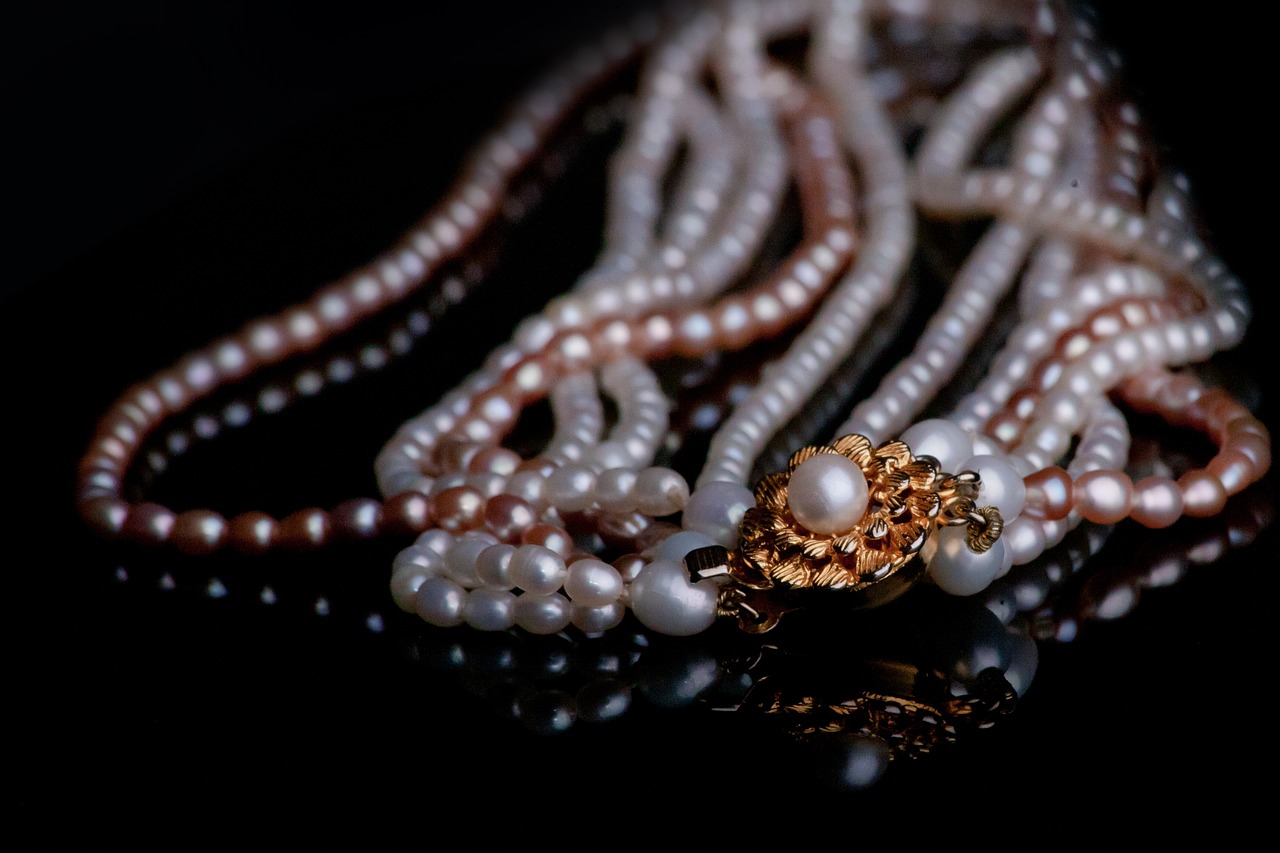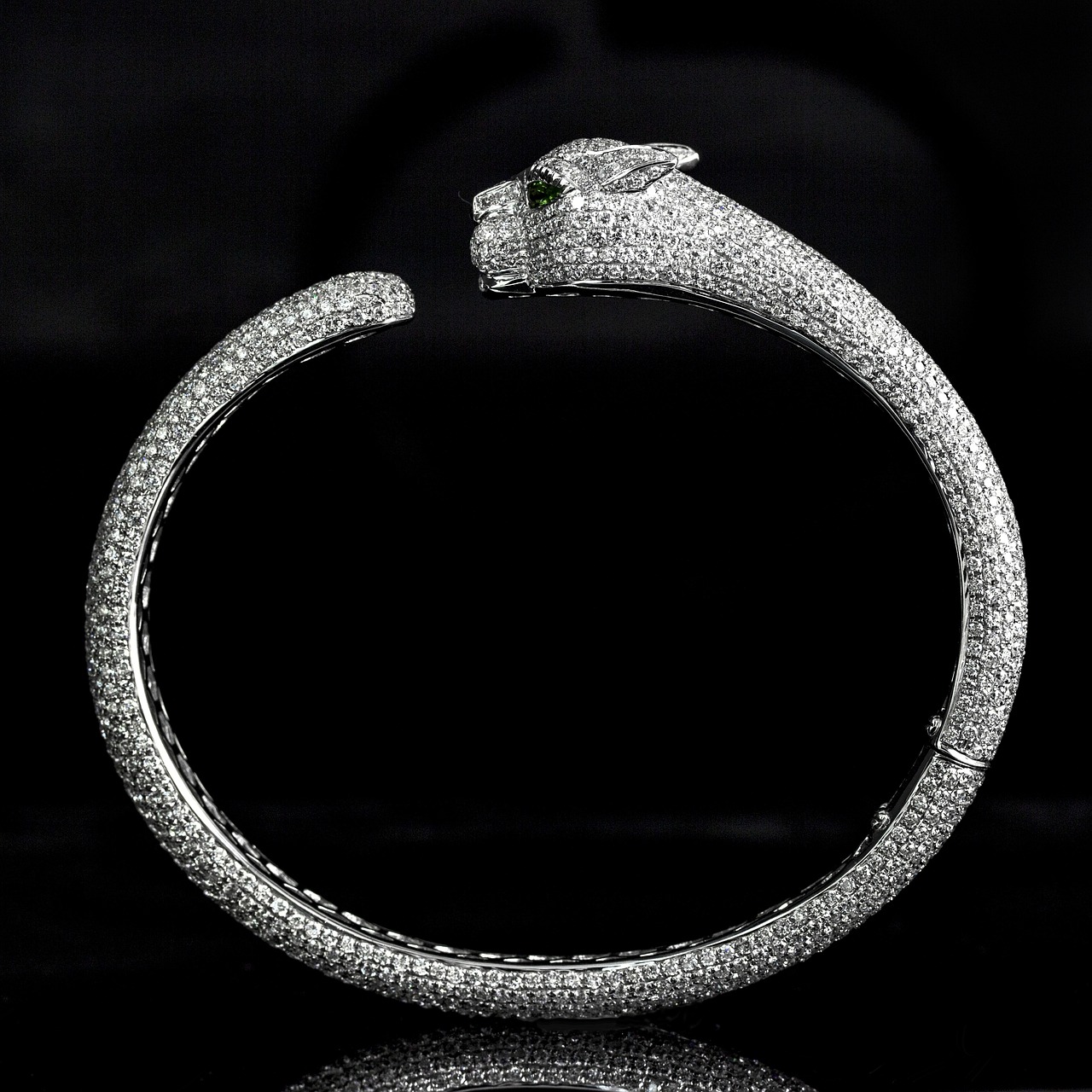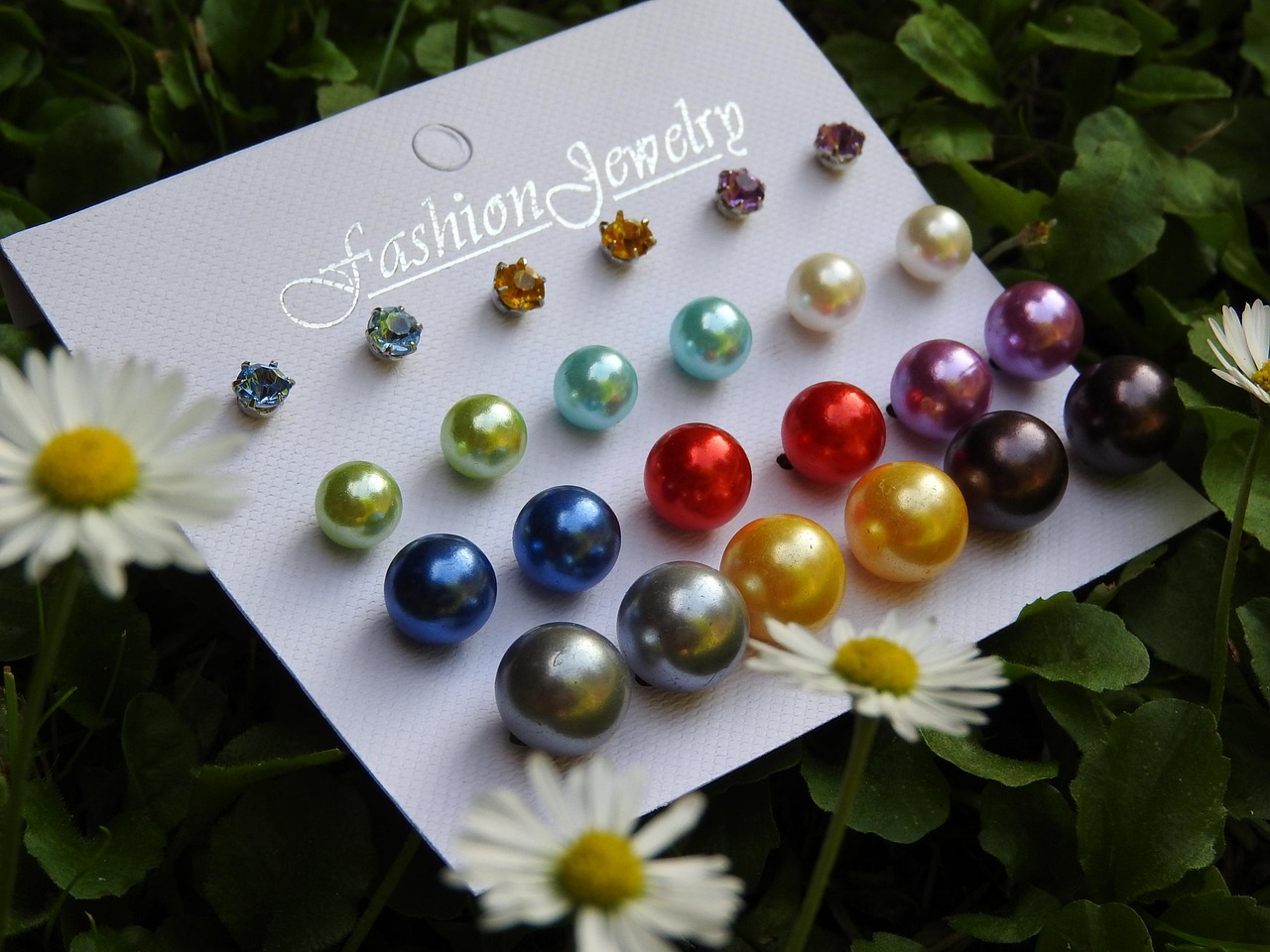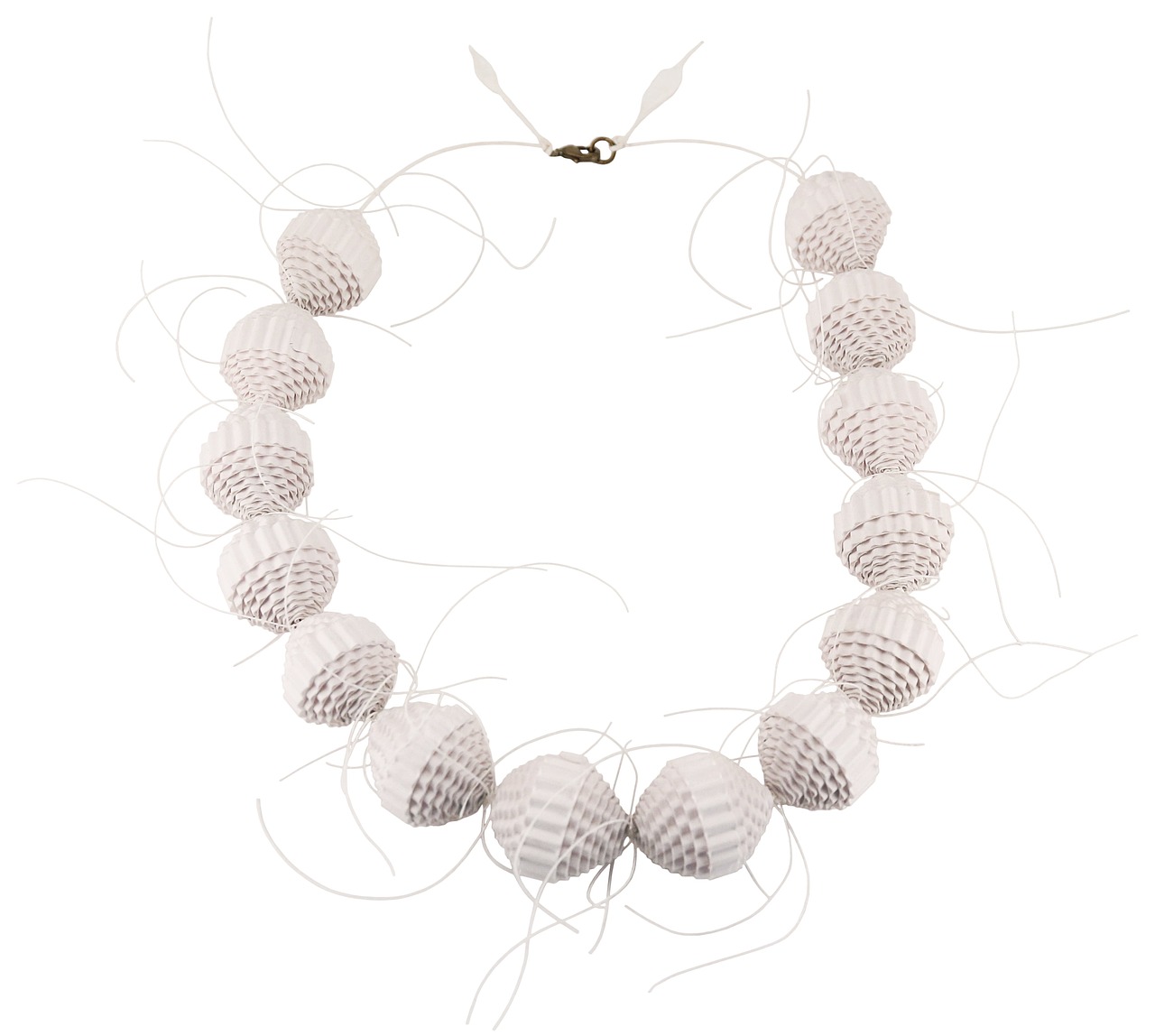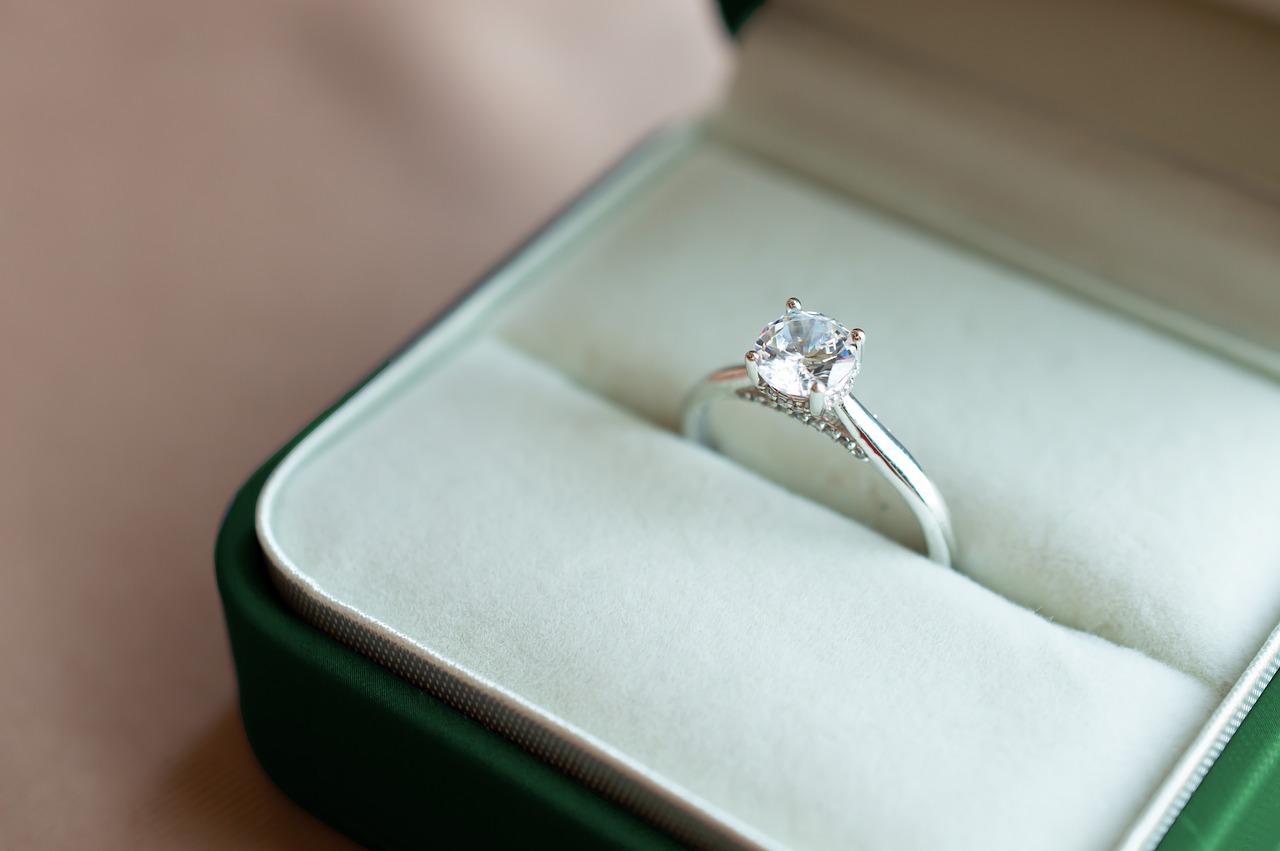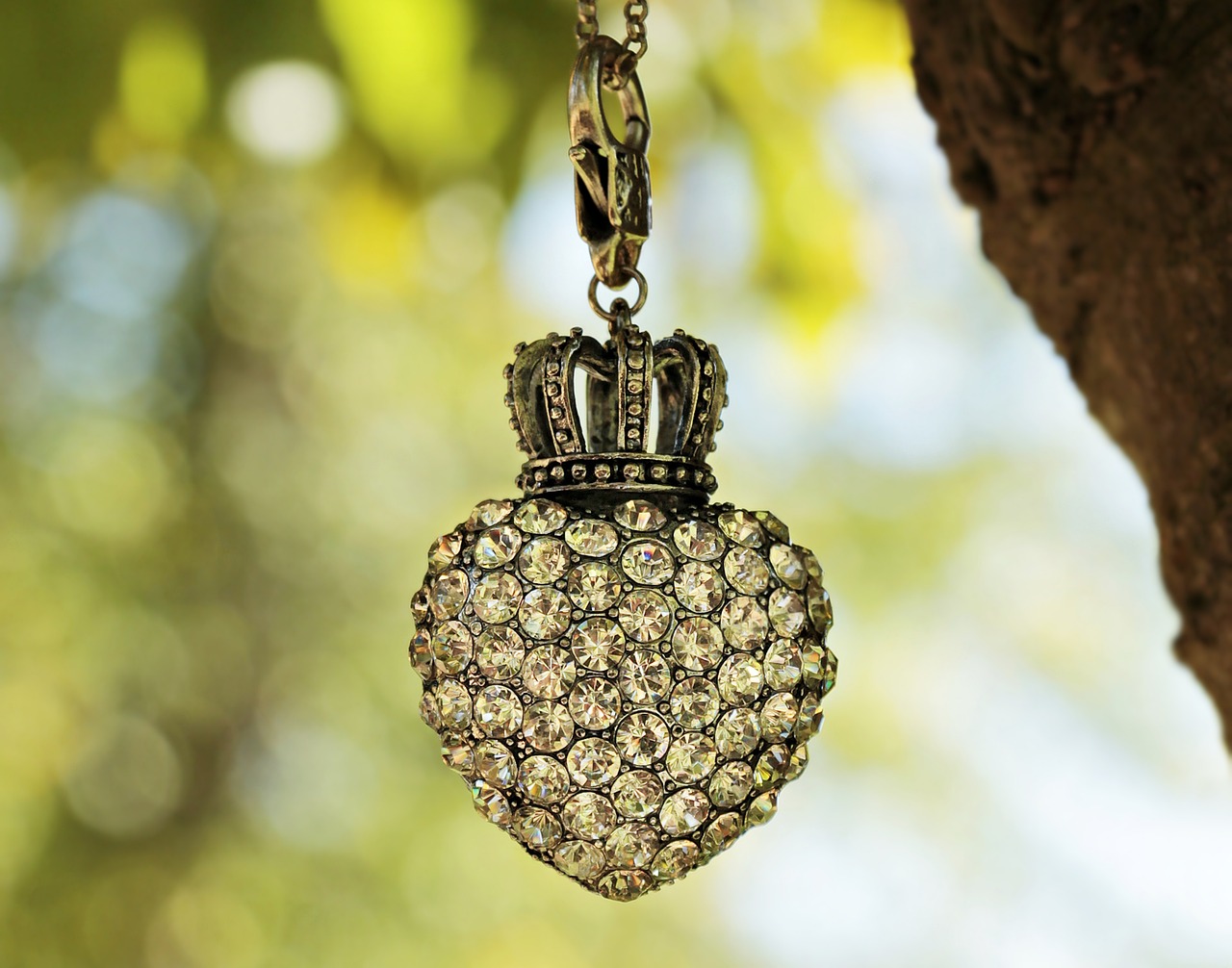Lab-grown diamonds have emerged as a revolutionary alternative to natural diamonds, captivating the attention of consumers and industry experts alike. This article delves into the rise of lab-grown diamonds, highlighting their numerous benefits, comparing them to traditional natural diamonds, and examining their influence on the luxury jewelry market.
Lab-grown diamonds are synthetic stones created in controlled environments using advanced technology. Unlike natural diamonds, which form over millions of years beneath the Earth’s surface, lab-grown diamonds can be produced in a matter of weeks. Understanding their composition is crucial for recognizing their authenticity and value.
Lab-grown diamonds are primarily created through two methods: High Pressure High Temperature (HPHT) and Chemical Vapor Deposition (CVD). Each method has its own unique processes that affect the quality and characteristics of the final product.
- Ethical Sourcing: Lab-grown diamonds are free from the ethical concerns associated with conflict diamonds.
- Environmental Sustainability: Their production has a significantly lower environmental impact compared to mining.
- Cost-Effectiveness: Typically, lab-grown diamonds are priced 20-40% lower than natural diamonds, making them accessible to a wider audience.
A frequent question arises: Are lab-grown diamonds considered real diamonds? The answer is yes. They possess the same physical, chemical, and optical properties as natural diamonds, making them indistinguishable to the naked eye.
Understanding consumer attitudes towards lab-grown diamonds is essential for the industry. Many consumers appreciate the transparency and ethical considerations surrounding lab-grown stones. As awareness grows, more people are choosing lab-grown options for their engagement rings and other fine jewelry.
When comparing lab-grown diamonds to natural diamonds, several key differences come to light:
- Value and Pricing: Lab-grown diamonds are typically more affordable, which can influence consumer purchasing decisions.
- Rarity: Natural diamonds are limited in supply, while lab-grown diamonds can be produced on demand, affecting market dynamics.
The future of lab-grown diamonds in the luxury jewelry market appears promising. As technology advances and consumer preferences shift, lab-grown diamonds are expected to gain a larger market share. Luxury brands are beginning to embrace this trend, incorporating lab-grown diamonds into their collections to appeal to a broader audience.
In conclusion, the rise of lab-grown diamonds signifies a transformative shift in the jewelry industry. With their ethical production, affordability, and similar qualities to natural diamonds, they present a compelling choice for modern consumers. As awareness and acceptance continue to grow, lab-grown diamonds are poised to redefine luxury jewelry for future generations.

What Are Lab-Grown Diamonds?
Lab-grown diamonds have emerged as a revolutionary alternative to natural diamonds, captivating consumers with their beauty and ethical appeal. These synthetic gemstones are produced in controlled environments, utilizing advanced technology to replicate the natural processes that create diamonds deep within the Earth. Understanding what lab-grown diamonds are is crucial for consumers looking to make informed choices in the jewelry market.
Lab-grown diamonds, also known as synthetic diamonds or cultured diamonds, are real diamonds that are created using two main methods: High Pressure High Temperature (HPHT) and Chemical Vapor Deposition (CVD). Unlike natural diamonds, which are formed over millions of years under extreme geological conditions, lab-grown diamonds can be produced in a matter of weeks. This rapid production process not only makes them more accessible but also significantly reduces their environmental impact.
One of the most fascinating aspects of lab-grown diamonds is their composition. They have the same physical, chemical, and optical properties as natural diamonds, meaning they are virtually indistinguishable from their mined counterparts. Both types of diamonds are made of carbon atoms arranged in a crystal structure, which gives them their characteristic hardness and brilliance.
The creation of lab-grown diamonds involves sophisticated techniques that mimic the natural diamond formation process. The two primary methods, HPHT and CVD, each have unique processes that contribute to the final product’s quality and characteristics.
The HPHT method simulates the high-pressure and high-temperature conditions found deep within the Earth. A small diamond seed is placed in a chamber with carbon, and then subjected to intense heat and pressure. This environment allows the carbon to crystallize around the seed, forming a diamond. The result is a diamond that can be nearly identical to natural ones in terms of clarity and color.
On the other hand, CVD involves the use of gases that contain carbon. These gases are introduced into a chamber where they are ionized, allowing carbon atoms to deposit onto a substrate, gradually forming a diamond layer. This method is known for producing diamonds with specific characteristics, such as unique colors and inclusions, which can be controlled during the growth process.
A common question that arises is whether lab-grown diamonds are considered real diamonds. The answer is a resounding yes. Lab-grown diamonds possess the same physical and chemical properties as natural diamonds, and they are graded using the same criteria, including the Four Cs: cut, color, clarity, and carat weight.
Lab-grown diamonds offer numerous benefits that appeal to modern consumers. Firstly, they are often more affordable than natural diamonds, allowing buyers to purchase larger stones or higher quality without breaking the bank. Secondly, they are produced in a controlled environment, ensuring ethical sourcing and reducing the environmental impact associated with traditional diamond mining.
When comparing lab-grown diamonds to natural diamonds, several factors come into play. While lab-grown diamonds are generally less expensive, their value can fluctuate based on market demand and consumer perceptions. Additionally, natural diamonds are often viewed as more rare and valuable due to their limited supply.
As the market for lab-grown diamonds continues to evolve, their impact on the luxury jewelry sector is significant. With increasing consumer awareness and preference for sustainable options, the future of lab-grown diamonds looks promising, potentially reshaping the landscape of luxury jewelry.
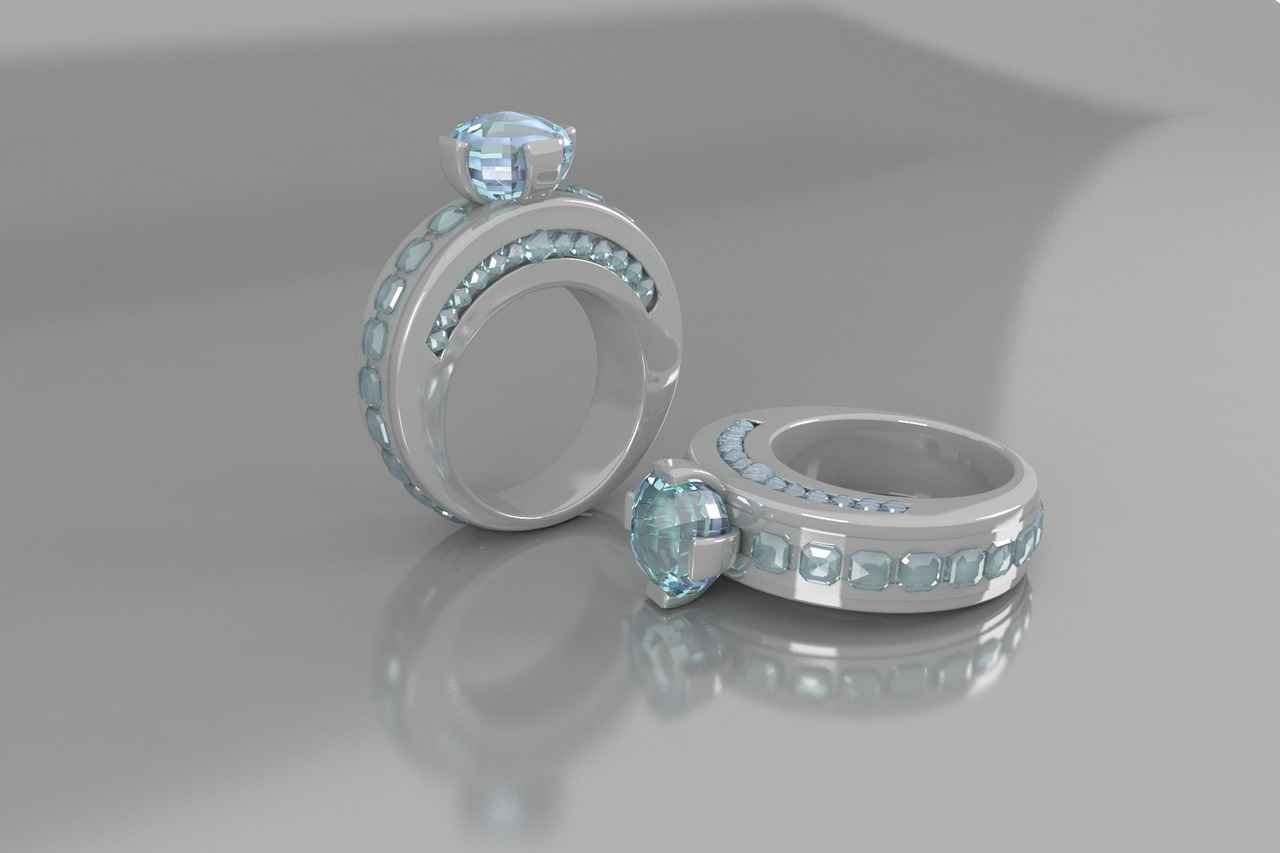
How Are Lab-Grown Diamonds Made?
Lab-grown diamonds represent a significant innovation in the jewelry industry, offering consumers an ethical and sustainable alternative to traditional diamonds. Understanding how these stones are made is crucial for anyone interested in their unique qualities and advantages.
Lab-grown diamonds are produced through two primary methods: High Pressure High Temperature (HPHT) and Chemical Vapor Deposition (CVD). Each technique employs distinct processes that significantly influence the final product’s quality and characteristics.
The HPHT method replicates the natural conditions under which diamonds form deep within the Earth. This process involves applying extreme pressure and temperature to carbon, effectively mimicking the geological processes that create natural diamonds.
The HPHT process begins with a small diamond seed, which acts as a nucleus for growth. The seed is placed in a chamber where intense heat (around 1500 degrees Celsius) and pressure (approximately 1.5 million pounds per square inch) are applied. Carbon is then introduced, allowing it to crystallize around the seed. This environment fosters the growth of a diamond, typically taking a few weeks to produce a gem-quality stone.
HPHT diamonds are known for their exceptional clarity and color, often surpassing natural diamonds in these aspects. Additionally, they can be produced in various colors, providing consumers with a broader range of options. The precision of the HPHT method also allows for the creation of larger stones, making them highly desirable in the luxury market.
The CVD method offers another innovative approach to creating lab-grown diamonds. This technique involves using gases to deposit carbon atoms onto a substrate, gradually forming a diamond layer by layer.
In the CVD process, a chamber is filled with carbon-rich gases, typically methane, and hydrogen. These gases are ionized, creating a plasma that breaks down the gas molecules. As the carbon atoms settle on a substrate, they begin to bond and crystallize, forming a diamond. This method can take several weeks to months, depending on the desired size and quality of the diamond.
CVD diamonds are praised for their ethical production and environmental sustainability. The process uses significantly less energy than traditional diamond mining, thereby reducing its carbon footprint. Moreover, CVD diamonds can be engineered to exhibit specific qualities, such as color and clarity, making them customizable for consumers.
- Production Time: HPHT diamonds generally grow faster than CVD diamonds.
- Cost: CVD diamonds tend to be more affordable due to lower production costs.
- Quality: Both methods can produce high-quality diamonds, but the specific characteristics may vary.
A common question is whether lab-grown diamonds are considered real diamonds. The answer is yes; lab-grown diamonds possess the same physical, chemical, and optical properties as natural diamonds, making them indistinguishable to the naked eye.
As consumer awareness grows, perceptions of lab-grown diamonds are shifting. Many buyers appreciate the ethical implications and sustainability of lab-grown options, leading to increased demand in the luxury jewelry market.
High Pressure High Temperature (HPHT)
The method is a revolutionary technique in the creation of lab-grown diamonds, closely mimicking the natural conditions under which diamonds are formed deep within the Earth. By applying extreme pressure and temperature to carbon, this process not only produces stunning diamonds but also offers insights into the geological processes that occur over millions of years.
HPHT begins with a diamond seed, a small piece of diamond that serves as the foundation for growth. This seed is placed in a chamber where it is subjected to conditions that replicate the Earth’s mantle, typically around 1,500 degrees Celsius and pressures exceeding 1.5 million pounds per square inch.
- Carbon Source: The carbon used in HPHT can come from various sources, including graphite or other carbon-rich materials.
- Growth Environment: The chamber is filled with a metal catalyst, which helps dissolve the carbon and facilitates the crystallization process around the diamond seed.
- Crystallization: As the carbon atoms are released from the solution, they begin to bond with the diamond seed, forming a larger diamond crystal over time.
The scientific principles governing HPHT are rooted in thermodynamics and crystallography. The application of high pressure and temperature accelerates the rate of crystallization, allowing diamonds to form in a matter of weeks instead of millions of years. This method not only enhances the quality of the diamonds produced but also allows for the creation of diamonds with unique characteristics.
HPHT diamonds are significant for several reasons:
- Quality: These diamonds often exhibit exceptional clarity and color, making them highly sought after in the jewelry market.
- Cost-Effectiveness: Due to the controlled environment and the ability to produce diamonds on demand, HPHT diamonds are typically more affordable than their natural counterparts.
- Sustainability: The HPHT process is environmentally friendly, reducing the ecological impact associated with traditional diamond mining.
Choosing HPHT diamonds comes with numerous advantages. Not only do they provide an ethical alternative to mined diamonds, but their quality and affordability make them an attractive option for consumers. Additionally, advancements in technology continue to improve the HPHT process, leading to even more exquisite diamonds in the future.
In summary, the HPHT method represents a significant advancement in the field of diamond production, combining scientific innovation with ethical considerations. As consumers increasingly seek sustainable and affordable luxury, HPHT diamonds are poised to play a crucial role in the evolving landscape of the jewelry market.
Process Overview of HPHT
The High Pressure High Temperature (HPHT) method is a fascinating technological advancement in the creation of lab-grown diamonds. This process not only mimics the natural formation of diamonds but also allows for the production of high-quality stones that can rival their natural counterparts. Understanding the intricate steps involved in HPHT diamond creation is essential for anyone interested in the world of lab-grown gems.
To begin with, the HPHT process starts with a small diamond seed, which acts as the nucleus for the new diamond. This seed is typically made from a synthetic diamond or a natural diamond fragment. Once the seed is prepared, it is placed in a specially designed chamber where both intense heat and extreme pressure are applied. The conditions inside the chamber mimic those found deep within the Earth’s mantle, where natural diamonds are formed over millions of years.
The following steps outline the HPHT process in detail:
- Step 1: Preparation of the Diamond Seed – The diamond seed is carefully selected for its quality and size, as it will determine the characteristics of the resulting diamond.
- Step 2: Setting Up the Chamber – The diamond seed is placed in a press that can generate the necessary pressure, typically exceeding 1.5 million pounds per square inch.
- Step 3: Heating the Chamber – The temperature inside the chamber is raised to around 1,500 degrees Celsius (2,732 degrees Fahrenheit), which is crucial for the carbon to transition into a diamond structure.
- Step 4: Introducing Carbon – Carbon is introduced into the chamber, often in the form of graphite. Under the high-pressure and high-temperature conditions, the carbon atoms begin to dissolve and crystallize around the diamond seed.
- Step 5: Cooling and Extraction – After a period ranging from a few days to several weeks, the pressure and temperature are gradually reduced. Once the conditions return to normal, the newly formed diamond is extracted from the chamber.
Throughout this process, careful monitoring is essential to ensure that the conditions remain optimal for diamond growth. The result is a lab-grown diamond that possesses the same physical and chemical properties as a natural diamond, including its brilliance and durability.
One of the significant advantages of the HPHT method is its ability to produce diamonds with exceptional clarity and color. Many HPHT diamonds exhibit fewer inclusions and can be created in a variety of colors, appealing to a wide range of consumer preferences.
In summary, the HPHT process is a remarkable feat of engineering and science, allowing for the creation of beautiful diamonds in a controlled environment. As technology continues to evolve, the quality and accessibility of HPHT diamonds are likely to improve, further solidifying their place in the luxury jewelry market.
Advantages of HPHT Diamonds
High Pressure High Temperature (HPHT) diamonds are gaining recognition in the jewelry market due to their remarkable qualities. These lab-grown diamonds not only offer a stunning appearance but also present several advantages when compared to traditional mined diamonds. Below, we explore the key benefits of choosing HPHT diamonds for your jewelry collection.
- Exceptional Clarity and Color: One of the most significant advantages of HPHT diamonds is their exceptional clarity and vibrant color. Unlike some natural diamonds, which may contain inclusions or imperfections, HPHT diamonds are often created under controlled conditions that minimize these flaws, resulting in stones that are visually stunning.
- Ethical Sourcing: Choosing HPHT diamonds means opting for an ethical choice in the jewelry market. These diamonds are created in laboratories, eliminating the concerns associated with blood diamonds or conflict diamonds that are mined in war-torn regions. Consumers can feel good about their purchase, knowing it supports ethical practices.
- Cost-Effectiveness: HPHT diamonds are typically more affordable than their natural counterparts. Since they can be produced in controlled environments, the costs associated with mining and transportation are significantly reduced. This affordability allows consumers to invest in larger or higher-quality stones without breaking the bank.
- Environmental Sustainability: The production of HPHT diamonds is far less harmful to the environment compared to traditional diamond mining. Mining operations can lead to deforestation, habitat destruction, and significant carbon emissions. In contrast, lab-grown diamonds require less land and resources, making them a more sustainable choice.
- Consistent Quality: HPHT diamonds are produced under precise conditions, which ensures a consistent level of quality. Consumers can expect a uniformity in color, clarity, and overall appearance, which is often not the case with natural diamonds that vary widely in quality.
- Innovative Technology: The HPHT process employs cutting-edge technology that not only replicates the natural diamond formation process but also allows for the creation of unique diamond characteristics. This innovation opens the door to custom designs and personalized jewelry options that cater to individual tastes.
In summary, HPHT diamonds offer a combination of beauty, ethical considerations, and affordability that make them a compelling choice for consumers. As the market for lab-grown diamonds continues to expand, understanding these advantages can help buyers make informed decisions that align with their values and preferences.
Chemical Vapor Deposition (CVD)
is a cutting-edge technique used in the production of lab-grown diamonds, characterized by its innovative approach to creating these stunning gemstones. This method employs a process that utilizes gases to deposit carbon atoms onto a substrate, allowing for the growth of diamonds in a controlled environment.
During the CVD diamond formation process, a mixture of gases, primarily methane and hydrogen, is introduced into a vacuum chamber. The gases are then energized, typically using microwave radiation, which breaks down the gas molecules and releases carbon atoms. These carbon atoms then settle onto a substrate, gradually crystallizing into diamond structures. This process can take several weeks, depending on the desired size and quality of the diamond.
Unique Properties of CVD Diamonds
- Purity and Clarity: CVD diamonds are known for their exceptional purity and clarity. The controlled environment in which they are created minimizes the presence of impurities, resulting in diamonds that are often clearer than their natural counterparts.
- Customization: One of the significant advantages of CVD technology is the ability to customize diamonds. Manufacturers can adjust the growth conditions to produce diamonds with specific colors and characteristics, catering to individual consumer preferences.
- Environmental Impact: CVD diamonds are often considered more environmentally friendly than mined diamonds. The process requires less energy and has a lower carbon footprint, aligning with the increasing consumer demand for sustainable products.
Additionally, CVD diamonds are graded using the same criteria as natural diamonds, including the Four Cs: cut, color, clarity, and carat weight. This ensures that consumers can make informed decisions based on standardized grading practices.
Another fascinating aspect of CVD diamonds is their potential for technological applications. Beyond their use in jewelry, CVD diamonds are being explored for use in electronics and cutting tools due to their exceptional hardness and thermal conductivity. This versatility highlights the growing importance of lab-grown diamonds in various industries.
In summary, the CVD method represents a significant advancement in diamond production, offering unique properties that appeal to both consumers and industries alike. As technology continues to evolve, CVD diamonds are poised to play a crucial role in the future of the diamond market, providing an ethical and sustainable alternative to traditional diamond mining.

Are Lab-Grown Diamonds Real Diamonds?
As consumers become more aware of the options available in the jewelry market, a common question arises: This inquiry is not just about definitions but delves into the essence of what constitutes a diamond and how these lab-created gems fit into that framework.
To answer the question, it’s essential to understand the fundamental differences and similarities between natural diamonds and lab-grown diamonds. Both types of diamonds share the same chemical structure, being composed of carbon atoms arranged in a crystal lattice. This means that in terms of physical and optical properties, lab-grown diamonds are indeed real diamonds.
Lab-grown diamonds are classified under the same gemological standards as natural diamonds. The Gemological Institute of America (GIA) and other reputable organizations provide grading systems that assess diamonds based on the Four Cs: Carat, Cut, Color, and Clarity. Lab-grown diamonds undergo the same rigorous testing and evaluation processes as their natural counterparts, ensuring their authenticity and quality.
Consumer perception plays a crucial role in the acceptance of lab-grown diamonds. Many consumers are becoming more educated about the differences between natural and lab-grown options. A survey conducted by Jewelers of America found that a significant percentage of consumers view lab-grown diamonds as ethical and sustainable alternatives to mined diamonds. This shift in perception is largely driven by a growing awareness of the environmental and ethical issues surrounding traditional diamond mining.
In the marketplace, the distinction between lab-grown and natural diamonds is increasingly blurred. Retailers often emphasize the ethical sourcing and affordability of lab-grown diamonds, appealing to a modern consumer base that values both quality and social responsibility. This trend has led to a rise in the popularity of lab-grown diamonds, with many consumers opting for them over natural diamonds when making significant purchases such as engagement rings.
When it comes to pricing, lab-grown diamonds are generally more affordable than natural diamonds. On average, lab-grown diamonds can be priced 20-40% lower than their natural counterparts. This price difference can be attributed to the fact that lab-grown diamonds can be produced on demand, eliminating the scarcity factor that often drives up the prices of natural diamonds.
The growth of the lab-grown diamond market is reshaping the luxury jewelry landscape. As more consumers embrace lab-grown options, the industry is expected to see a significant shift in demand. Experts predict that lab-grown diamonds will continue to gain traction, particularly among younger consumers who prioritize sustainability and ethical considerations in their purchasing decisions.
In conclusion, lab-grown diamonds are indeed real diamonds, possessing the same qualities as natural diamonds while offering distinct advantages in terms of ethics and affordability. As consumer awareness and acceptance grow, the future of lab-grown diamonds in the luxury jewelry market looks promising.
real.
Lab-Grown Diamonds: The Future of Luxury Jewelry?
This article explores the rise of lab-grown diamonds, their benefits, comparisons to natural diamonds, and their impact on the luxury jewelry market, providing a comprehensive understanding of this innovative trend.
What Are Lab-Grown Diamonds?
Lab-grown diamonds are created using advanced technological processes that replicate the natural conditions under which diamonds form. Understanding their composition is essential for discerning their value and authenticity.
How Are Lab-Grown Diamonds Made?
- High Pressure High Temperature (HPHT): This method mimics the natural diamond formation process by applying extreme pressure and temperature to carbon.
- Chemical Vapor Deposition (CVD): This technique uses gases to deposit carbon atoms onto a substrate, resulting in unique properties.
Are Lab-Grown Diamonds Real Diamonds?
A common question among consumers is whether lab-grown diamonds are considered real. This section clarifies the definition of diamonds and their classification in the gemological community.
Gemological Standards for Lab-Grown Diamonds
Lab-grown diamonds possess the same physical, chemical, and optical properties as natural diamonds, adhering to gemological standards that govern their classification and grading.
Consumer Perception of Lab-Grown Diamonds
Understanding how consumers view lab-grown diamonds is crucial for the industry. Trends in consumer preferences and perceptions regarding authenticity and value are examined here.
What Are the Benefits of Lab-Grown Diamonds?
- Ethical Sourcing: Lab-grown diamonds are produced without the ethical concerns associated with traditional mining.
- Environmental Sustainability: Their production has a significantly lower environmental impact compared to natural diamonds.
- Cost-Effectiveness: Lab-grown diamonds are typically more affordable, making them accessible to a broader audience.
How Do Lab-Grown Diamonds Compare to Natural Diamonds?
Comparing lab-grown diamonds to natural diamonds reveals differences in value, rarity, and consumer sentiment.
Value and Pricing Differences
Lab-grown diamonds are generally more affordable than their natural counterparts. Factors influencing price differences include production costs and market demand.
Rarity and Market Trends
Natural diamonds are limited in supply, while lab-grown diamonds can be produced on demand. This affects market trends and consumer buying behavior significantly.
What Is the Future of Lab-Grown Diamonds in Luxury Jewelry?
As the market for lab-grown diamonds continues to grow, its impact on the luxury jewelry sector is significant. Future trends may indicate a shift in consumer preferences towards these ethically and environmentally conscious alternatives.
This section clarifies the definition of diamonds and their classification in the gemological community.
The world of gemology is intricate and fascinating, especially when it comes to understanding the classification of diamonds. A common question that arises is, “Are lab-grown diamonds considered real diamonds?” This article aims to clarify the definition of diamonds and their classification within the gemological community, providing insights into both natural and lab-grown diamonds.
A diamond is defined as a crystalline form of carbon, renowned for its exceptional hardness and brilliance. Diamonds are formed under high-pressure and high-temperature conditions deep within the Earth’s mantle over millions of years. However, with advancements in technology, lab-grown diamonds have emerged, created in controlled environments that replicate these natural conditions.
Both lab-grown and natural diamonds share the same physical, chemical, and optical properties. This means that, in terms of composition, they are indistinguishable. However, the primary difference lies in their origin:
- Natural Diamonds: Formed over billions of years and mined from the Earth.
- Lab-Grown Diamonds: Created in weeks to months using advanced technological processes.
In the gemological community, diamonds are classified based on their origin, appearance, and quality. The Gemological Institute of America (GIA) and other reputable organizations provide grading systems that assess diamonds on the 4 Cs: Cut, Color, Clarity, and Carat weight. Both lab-grown and natural diamonds are graded using these criteria, ensuring that consumers receive accurate information about their purchase.
The term “real diamonds” often generates confusion. Lab-grown diamonds are indeed real diamonds as they possess the same chemical structure and properties as natural diamonds. The distinction lies in their origin, which is crucial for understanding their value and market perception.
Consumer perception of lab-grown diamonds is evolving. Many consumers appreciate the ethical implications of choosing lab-grown diamonds, as they are free from the environmental and social issues often associated with natural diamond mining. Surveys indicate that a significant number of buyers view lab-grown diamonds as a viable alternative, especially given their lower price point.
Lab-grown diamonds are graded by the same gemological standards that apply to natural diamonds. This includes assessments of their clarity, color, and cut. The grading ensures that consumers can make informed decisions based on the quality of the diamond, regardless of its origin.
In summary, lab-grown diamonds are real diamonds, classified similarly to their natural counterparts within the gemological community. Their rise in popularity reflects changing consumer attitudes towards ethical sourcing and sustainability in the luxury jewelry market. As technology continues to advance, the distinction between lab-grown and natural diamonds may further blur, making it essential for consumers to understand the nuances of their choices.
Gemological Standards for Lab-Grown Diamonds
Lab-grown diamonds have emerged as a significant player in the jewelry market, captivating consumers with their brilliance and ethical appeal. A crucial aspect of understanding these gems lies in the gemological standards that dictate their classification and grading. This section delves into the essential parameters that define lab-grown diamonds, ensuring they are recognized as authentic and valuable.
Gemological standards encompass a set of criteria used by experts to evaluate and classify diamonds. These standards are vital for both natural and lab-grown diamonds, ensuring consistency in grading and consumer confidence. The primary factors include:
- Carat Weight: This refers to the weight of the diamond, impacting its value significantly.
- Color: Diamonds are graded on a scale from D (colorless) to Z (light yellow), influencing their aesthetic appeal.
- Clarity: This measures the presence of internal or external flaws, affecting the stone’s overall quality.
- Cut: The quality of the cut determines how well the diamond reflects light, enhancing its brilliance.
Yes, lab-grown diamonds are evaluated using the same gemological standards as their natural counterparts. This parity ensures that consumers can trust the quality and value of lab-grown diamonds. The Gemological Institute of America (GIA) and other reputable organizations have established grading systems applicable to both types of diamonds.
Grading lab-grown diamonds involves a meticulous examination of the four Cs mentioned above. Expert gemologists utilize advanced technology to assess these characteristics accurately. The grading report provides detailed information, allowing consumers to make informed decisions.
Certification plays a pivotal role in the lab-grown diamond market. Reputable labs, such as the GIA and International Gemological Institute (IGI), offer certification services that validate the quality and authenticity of lab-grown diamonds. This certification provides transparency, enhancing consumer trust.
As awareness of lab-grown diamonds grows, so does the demand for clear and reliable information regarding their grading. Consumers are increasingly seeking certified lab-grown diamonds, understanding that these gems are not just ethical alternatives but also hold comparable value to natural diamonds. This shift in consumer sentiment is reshaping the luxury jewelry landscape.
Gemological standards are essential for several reasons:
- Consumer Protection: They help protect consumers from misleading claims and ensure they receive a product that matches its description.
- Market Integrity: Consistent grading practices maintain the integrity of the diamond market, fostering fair competition.
- Value Assurance: Clear standards enable consumers to assess the true value of their diamonds, whether lab-grown or natural.
In conclusion, understanding the gemological standards for lab-grown diamonds is crucial for consumers and industry professionals alike. As this market continues to evolve, adherence to these standards will play a vital role in establishing trust and confidence in lab-grown diamonds. By providing clarity and transparency, gemological standards ensure that lab-grown diamonds are recognized for their beauty and value.
Consumer Perception of Lab-Grown Diamonds
Consumer perception plays a vital role in the lab-grown diamond industry, influencing purchasing decisions and shaping market trends. As consumers become more aware of the environmental and ethical implications of their choices, understanding how they view lab-grown diamonds is essential for retailers and manufacturers alike. This section delves into the evolving landscape of consumer attitudes towards these innovative gems.
Recent studies reveal a growing acceptance of lab-grown diamonds among consumers. Many view them as a viable alternative to natural diamonds, appreciating their ethical sourcing and lower price points. A significant percentage of shoppers now prioritize sustainability when making luxury purchases, leading to a shift in buying behavior.
One of the primary concerns among consumers is whether lab-grown diamonds are authentic. The answer lies in their composition; lab-grown diamonds possess the same physical, chemical, and optical properties as natural diamonds. This section clarifies the definitions and classifications used in the gemological community, helping consumers understand that lab-grown diamonds are indeed real diamonds.
- Price: Lab-grown diamonds are typically priced 20-40% lower than natural diamonds, making them an attractive option for budget-conscious consumers.
- Ethical Concerns: Many consumers are increasingly aware of the ethical implications associated with natural diamond mining, including labor practices and environmental impact.
- Quality: Lab-grown diamonds often exhibit superior clarity and color due to controlled manufacturing conditions, appealing to quality-focused buyers.
Marketing plays a crucial role in shaping consumer perceptions of lab-grown diamonds. Brands that emphasize the sustainability and ethical sourcing of their products tend to resonate more with environmentally conscious consumers. Additionally, educational campaigns that clarify the differences between lab-grown and natural diamonds help demystify the product, fostering greater acceptance.
Understanding the demographics of lab-grown diamond buyers is essential for targeting marketing efforts. Research indicates that millennials and Generation Z are the primary consumers of lab-grown diamonds, driven by their values of sustainability and ethical consumption. These younger consumers are more likely to prioritize a diamond’s origin and environmental impact over traditional notions of luxury.
As awareness of lab-grown diamonds increases, consumer attitudes are evolving. Many are beginning to see these diamonds as not just a cost-effective alternative but also as a smart choice that aligns with their values. This shift is evident in the growing number of retailers offering lab-grown options, reflecting a broader acceptance in the luxury market.
In conclusion, the perception of lab-grown diamonds is rapidly changing, influenced by various factors such as price, ethics, and marketing. As consumers continue to prioritize sustainability and authenticity, the demand for lab-grown diamonds is expected to rise, reshaping the landscape of the luxury jewelry industry.
What Are the Benefits of Lab-Grown Diamonds?
In recent years, lab-grown diamonds have gained significant traction among consumers, primarily due to their myriad benefits. These diamonds are not only a sustainable choice but also align with the ethical values of many modern buyers. This section delves into the key advantages that make lab-grown diamonds an appealing option for today’s discerning consumers.
One of the most compelling benefits of lab-grown diamonds is their ethical sourcing. Traditional diamond mining has been associated with various human rights violations and environmental degradation. In contrast, lab-grown diamonds are produced in controlled environments, ensuring that no unethical practices are involved in their creation. This transparency appeals to consumers who are increasingly concerned about the origins of their purchases.
The environmental impact of diamond mining is profound, leading to habitat destruction and significant carbon emissions. Lab-grown diamonds, however, are created using processes that consume less energy and produce minimal waste. By choosing lab-grown options, consumers can contribute to a more sustainable future without compromising on quality or beauty.
Lab-grown diamonds are typically more affordable than their natural counterparts, often costing 20-40% less. This price difference allows consumers to purchase larger or higher-quality diamonds without exceeding their budget. The savings can be substantial, making lab-grown diamonds an attractive option for those looking to maximize their investment.
Lab-grown diamonds are renowned for their exceptional quality. They often exhibit superior clarity and color compared to natural diamonds, which can be affected by geological conditions during formation. Additionally, the technology used in creating lab-grown diamonds allows for a wider variety of shapes and sizes, giving consumers more options to choose from.
With the rise of lab-grown diamonds, many consumers feel more confident in their purchases due to the transparency surrounding the production process. Certifications and detailed information about the diamond’s origin are readily available, allowing buyers to make informed decisions. This level of confidence fosters a positive buying experience and builds trust between consumers and retailers.
The advanced technology used in creating lab-grown diamonds not only enhances their quality but also ensures consistency. Techniques like High Pressure High Temperature (HPHT) and Chemical Vapor Deposition (CVD) allow for the production of diamonds that are virtually indistinguishable from natural ones. This innovation represents a significant leap forward in the diamond industry, appealing to tech-savvy consumers.
As awareness of the benefits of lab-grown diamonds increases, consumer preferences are shifting. Many buyers are now prioritizing ethical and sustainable choices over traditional luxury. This change is evident in the growing demand for lab-grown diamonds in engagement rings and other fine jewelry, demonstrating a significant shift in the luxury market landscape.
In summary, the benefits of lab-grown diamonds—ethical sourcing, environmental sustainability, cost-effectiveness, superior quality, consumer confidence, innovative technology, and changing preferences—make them a compelling choice for modern consumers. As the market continues to evolve, lab-grown diamonds are poised to redefine luxury jewelry.
How Do Lab-Grown Diamonds Compare to Natural Diamonds?
When examining the distinctions between lab-grown diamonds and natural diamonds, it becomes evident that these two categories of gemstones possess unique characteristics that influence their value, rarity, and consumer perception. This section delves into a comprehensive analysis of these differences and their broader implications in the market.
One of the most significant differences between lab-grown and natural diamonds is their value. Typically, lab-grown diamonds are more affordable than their natural counterparts, often priced 20-40% lower. This price disparity arises from the production methods and the inherent rarity of natural diamonds. Lab-grown diamonds can be produced in large quantities, allowing for a more stable supply chain. This section explores the factors influencing price differences, including:
- Production Costs: Lab-grown diamonds require less time and fewer resources to create.
- Market Demand: As consumer awareness grows, demand for lab-grown options increases.
- Perceived Value: Many consumers are still learning about the benefits of lab-grown diamonds.
Natural diamonds are often considered rare due to their geological formation, which occurs over millions of years deep within the Earth’s mantle. This rarity significantly influences their market value. In contrast, lab-grown diamonds can be produced on demand, leading to a more consistent availability. The implications of this difference in rarity include:
- Investment Value: Natural diamonds are often viewed as a long-term investment due to their limited supply.
- Market Trends: The rising availability of lab-grown diamonds may shift consumer preferences away from natural options.
Consumer perception plays a crucial role in the success of lab-grown diamonds. Many buyers are increasingly prioritizing ethical sourcing and sustainability, making lab-grown diamonds an attractive choice. However, some consumers still perceive natural diamonds as more desirable due to their romanticized history and symbolism. Key factors influencing consumer sentiment include:
- Awareness: As education about lab-grown diamonds increases, more consumers are open to purchasing them.
- Marketing Strategies: Effective marketing can shift perceptions and highlight the benefits of lab-grown options.
- Social Influence: Celebrity endorsements and social media trends can significantly impact consumer choices.
In conclusion, the comparison between lab-grown and natural diamonds reveals important distinctions in value, rarity, and consumer sentiment. As the market continues to evolve, understanding these differences will help consumers make informed choices when selecting their perfect diamond. The future of luxury jewelry may very well hinge on the growing acceptance of lab-grown diamonds, reflecting a shift towards more ethical and sustainable practices in the industry.
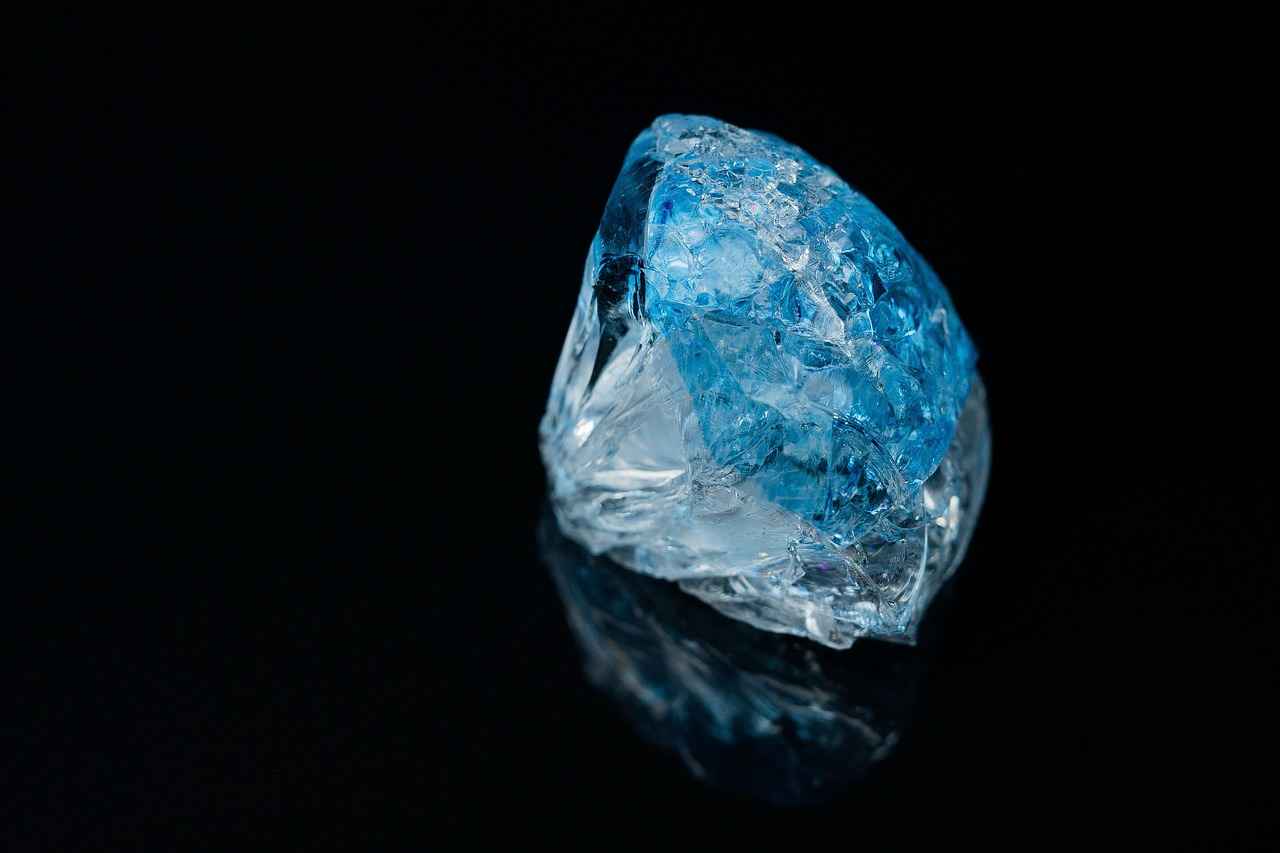
Value and Pricing Differences
Lab-grown diamonds have emerged as a compelling alternative to natural diamonds, particularly in terms of affordability. As consumers become more conscious of their spending and the ethical implications of their purchases, understanding the between these two types of diamonds becomes increasingly important.
One of the primary reasons lab-grown diamonds are typically more affordable than their natural counterparts is the production process. Unlike natural diamonds, which take millions of years to form deep within the Earth, lab-grown diamonds can be created in a matter of weeks using advanced technologies. This rapid production reduces costs significantly.
- Production Costs: The methods used to create lab-grown diamonds, such as High Pressure High Temperature (HPHT) and Chemical Vapor Deposition (CVD), involve technology that can be scaled efficiently. This scalability means that as demand increases, production can be ramped up without a corresponding increase in costs.
- Market Demand: As consumer awareness and acceptance of lab-grown diamonds grow, the market for these stones expands. However, the supply of lab-grown diamonds is not constrained by geological factors, allowing prices to remain competitive.
- Rarity of Natural Diamonds: Natural diamonds are limited in supply, which contributes to their higher prices. The perception of rarity plays a significant role in the pricing of natural diamonds, whereas lab-grown diamonds can be produced in abundance.
The affordability of lab-grown diamonds is influencing consumer purchasing decisions. Many buyers are now prioritizing ethical and sustainable options. The cost savings associated with lab-grown diamonds can allow consumers to invest in larger or higher-quality stones than they could afford if purchasing natural diamonds.
Despite their lower price, lab-grown diamonds are often perceived as equally valuable as natural diamonds. They possess the same physical, chemical, and optical properties, making them indistinguishable to the naked eye. This perception is crucial, as it allows consumers to feel confident in their purchases, knowing they are acquiring a product that meets the same standards as traditional diamonds.
As the jewelry market evolves, the between lab-grown and natural diamonds will continue to shape consumer preferences. With a growing emphasis on ethical and sustainable practices, lab-grown diamonds are likely to become a staple in luxury jewelry, redefining what consumers consider valuable.
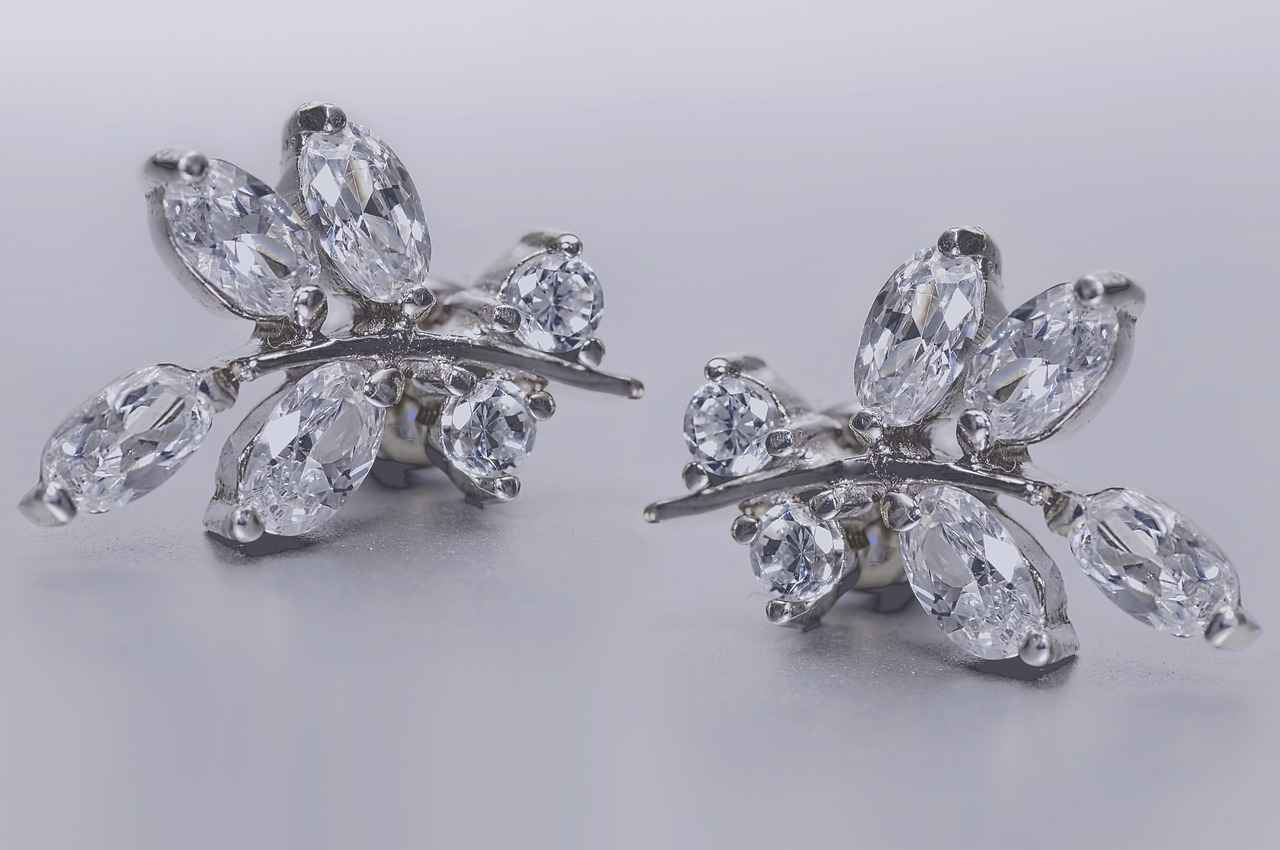
Rarity and Market Trends
The jewelry market has long been influenced by the rarity of natural diamonds, which are formed over millions of years deep within the Earth’s crust. This inherent scarcity has established a sense of luxury and exclusivity around natural diamonds, making them highly coveted among consumers. However, the advent of lab-grown diamonds has introduced a new dynamic into the market, challenging traditional perceptions and altering consumer behaviors.
Natural diamonds are finite, with their supply constrained by geological processes that take millions of years. This limited availability creates a significant impact on pricing and market trends. In contrast, lab-grown diamonds can be produced on demand, allowing for a more stable and predictable supply. This difference in rarity fundamentally shifts the dynamics of consumer purchasing behavior.
- Perceived Value: The scarcity of natural diamonds often leads to a perception of higher value among consumers. Many view natural diamonds as a symbol of status and wealth, driving demand.
- Price Sensitivity: As lab-grown diamonds are generally more affordable, consumers who prioritize value over tradition may opt for these alternatives. The price difference can be substantial, often allowing consumers to purchase larger or higher-quality stones.
- Ethical Considerations: With increasing awareness of ethical sourcing, many consumers are gravitating towards lab-grown diamonds, viewing them as a more responsible choice. This shift in values is reshaping purchasing decisions.
As the market for lab-grown diamonds expands, traditional market trends are being challenged. The growing acceptance of lab-grown diamonds is leading to a re-evaluation of rarity within the industry. Consumers are increasingly prioritizing quality and ethical considerations over the traditional allure of rarity.
Knowledge about the differences between natural and lab-grown diamonds is crucial for consumers. As information becomes more accessible, consumers are empowered to make informed decisions, which can further influence market trends. Retailers and jewelers are now focusing on educating consumers about the benefits of lab-grown diamonds, including their environmental sustainability and ethical sourcing.
The future of the diamond market will likely see a continued blending of natural and lab-grown diamonds. As lab-grown diamonds become more mainstream, their impact on market pricing and consumer preferences will be significant. The rarity of natural diamonds may still hold value, but the increasing production capabilities of lab-grown diamonds are reshaping the landscape.
In conclusion, the rarity of natural diamonds has historically dictated market trends and consumer behavior. However, the emergence of lab-grown diamonds is challenging these norms, offering consumers more choices and redefining what it means to own a diamond. As the industry adapts to these changes, understanding the implications of rarity will be essential for both consumers and retailers alike.
What Is the Future of Lab-Grown Diamonds in Luxury Jewelry?
The luxury jewelry market is undergoing a transformation, largely attributed to the rise of lab-grown diamonds. As consumers become increasingly aware of ethical and environmental concerns, the demand for these stones is on the rise. This article delves into the future of lab-grown diamonds in the luxury jewelry sector, exploring emerging trends and shifts in consumer preferences.
Several factors contribute to the growing popularity of lab-grown diamonds:
- Ethical Sourcing: Many consumers are prioritizing ethically sourced products. Lab-grown diamonds eliminate concerns related to conflict diamonds.
- Environmental Impact: The mining of natural diamonds can be detrimental to the environment. Lab-grown alternatives offer a more sustainable option.
- Cost-Effectiveness: Lab-grown diamonds are often significantly less expensive than natural diamonds, making luxury more accessible.
As awareness increases, consumer attitudes towards lab-grown diamonds are evolving:
- Increased Acceptance: A growing number of consumers view lab-grown diamonds as a legitimate alternative to natural diamonds. This acceptance is reflected in sales and marketing strategies.
- Value Perception: Many consumers recognize that lab-grown diamonds offer similar quality at a lower price, which influences their purchasing decisions.
- Personalization: The ability to create custom lab-grown diamonds appeals to younger generations who value unique and personalized products.
Looking ahead, several trends are likely to shape the future of lab-grown diamonds in luxury jewelry:
- Technological Advancements: As technology improves, the quality and variety of lab-grown diamonds will continue to enhance, attracting more consumers.
- Brand Collaborations: High-end brands are increasingly collaborating with lab-grown diamond manufacturers to create exclusive collections, which could further legitimize these products in the luxury market.
- Expanded Retail Presence: Retailers are incorporating lab-grown diamonds into their offerings, making them more accessible to consumers.
The luxury jewelry market is known for its adaptability. As consumer preferences shift, the market is expected to respond in several ways:
- Innovation in Marketing: Brands will need to develop marketing strategies that highlight the benefits of lab-grown diamonds, focusing on their ethical and sustainable aspects.
- Education and Awareness: Increased efforts to educate consumers about the differences and benefits of lab-grown versus natural diamonds will be crucial.
- Customization Options: Offering customizable options will cater to the growing demand for unique and personalized jewelry pieces.
In conclusion, the future of lab-grown diamonds in the luxury jewelry sector looks promising. As consumer preferences continue to evolve towards sustainability, ethical sourcing, and affordability, lab-grown diamonds are poised to play a significant role in shaping the industry’s landscape. The ongoing innovations and shifts in consumer attitudes suggest that lab-grown diamonds will not only coexist with natural diamonds but may also redefine luxury jewelry as we know it.
Frequently Asked Questions
- What are lab-grown diamonds?
Lab-grown diamonds are created in controlled environments using advanced technology that replicates the natural conditions under which diamonds form. They have the same physical and chemical properties as natural diamonds, making them a stunning choice for jewelry.
- Are lab-grown diamonds real diamonds?
Yes, lab-grown diamonds are considered real diamonds. They possess identical characteristics to natural diamonds, including brilliance and hardness. The only difference lies in their origin—one is mined from the earth, while the other is cultivated in a lab.
- What are the benefits of choosing lab-grown diamonds?
Lab-grown diamonds offer several advantages, including ethical sourcing, reduced environmental impact, and often lower prices compared to natural diamonds. They appeal to modern consumers who value sustainability and transparency in their purchases.
- How do lab-grown diamonds compare to natural diamonds in price?
Lab-grown diamonds are typically more affordable than natural diamonds. This price difference is due to the availability and production methods of lab-grown diamonds, which can be created on demand, unlike their naturally occurring counterparts.
- What does the future hold for lab-grown diamonds in the jewelry market?
The future looks bright for lab-grown diamonds as consumer preferences shift toward more sustainable and ethical options. As awareness grows, we can expect to see an increase in their popularity, potentially reshaping the luxury jewelry landscape.
